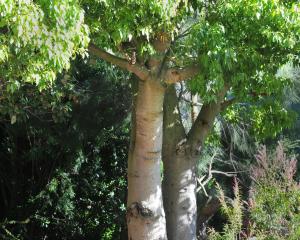What to do in your garden this week.
Vegetables
At this busy time of year, routine maintenance in the garden can be bottom of the list. Set aside a few minutes every fine day to hoe around all crops, except strawberries. Hoeing promotes air circulation, preventing the ground becoming hard and less able to take in water when it rains.
Peas, lettuce, radish, turnips, kohlrabi, mustard and cress, spinach and carrots can still be sown, while cabbage, cauliflower, leeks and celery can be planted in well-manured soil. Peas and runner and other climbing beans already growing should be staked.
Swedes may still be sown in districts with a long autumn growing season. Add equal parts of blood and bone and superphosphate to the soil, and work it into the top 15cm, before sowing seeds in drills 1cm deep and 40cm apart. Speed germination by covering with sacks or planks, but remove these as soon as seedlings appear.
Fruit
Blackcurrants, once harvested, should have branches that have fruited for a couple of seasons removed. That will encourage strong growth from the base of next season’s fruiting branches.
Red and white currants can have young shoots, except leaders, shortened to about 10cm long. Do this as the fruit starts to colour.
The centres of gooseberry bushes should be kept open, so remove growths crossing each other. New shoots straggling along the ground will be useless for fruiting, so cut them to an outward-facing bud. Prune as soon as the crop has been gathered; or prune as you pick.
Flowers
Roses are at their best this month, but care should be taken to remove any malformed buds and faded flowers.
Cut rose blooms in the early morning or late in the evening and they will last longer.
Mulching material will help conserve moisture in the soil and gradually rot down into plant food. Use garden compost, spent hops if available, lawn clippings or leaf mould. Spread it evenly, no more than 10cm thick, and keep it away from plant stems.
Marigolds, asters, zinnias and cosmos can still be planted out. Remove any flowers and pinch out the central growing point to encourage a branching habit.
Hollyhock seed can be sown now to produce strong plants for setting out in April or May to flower next summer.
Ideal against dry, sunny walls, once established, these hardy perennials need little water. Fuchsias stop flowering if the roots become dry.
Mulching is beneficial and liquid manuring, with a sprinkling of blood and bone, is good.
Dead flowers and seed heads can be removed from all shrubs and long-flowering annuals, such as rhododendrons, azaleas, roses, sweet peas, asters, dahlias, pansies, violas, carnations and pinks and Iceland poppies.
Hydrangea cuttings can be taken now from non-flowering shoots. Remove all but the top two pairs of leaves and trim with a sharp knife, immediately below a leaf joint.
Insert in a pot of sandy soil and keep moist and shaded until rooting takes place. Plant in rich soil in the open garden, or put into a container to grow as a pot plant.












